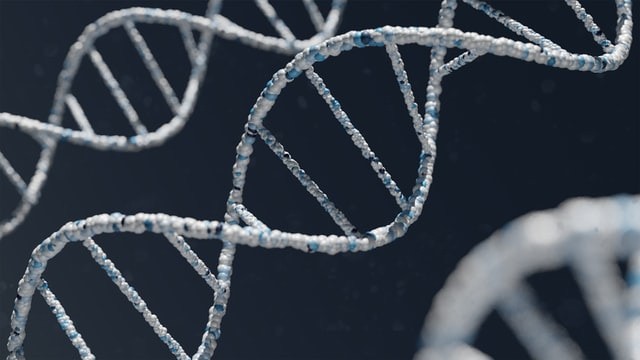Animal lives are being revealed via hidden DNA. New research on the genetic material or eDNA, plants, and animals shed has astonishing biological insights.

Salamander Observation
A Rio Grande siren, a slippery, two-legged, foot-long salamander protected by the state of Texas, hadn't been seen in the area of Eagle Pass, a hamlet on the border between the United States and Mexico, for more than 140 years. But in 2019, Mississippi State University Ph.D. candidate and biologist Krista Ruppert recognized she didn't need a siren to demonstrate that they were still present.
All she needed was some murky water to filter.
DNA and eDNA Research
Ruppert discovered enough environmental DNA at Eagle Pass, the genetic material left behind when creatures move through life by crawling, swimming, or flapping, to prove that the elusive amphibians still exist at the westernmost extent of their known range.
Environmental DNA, or eDNA, has transformed marine and aquatic research in the last ten years by enabling researchers to sample "a whole ecosystem" with just one liter of water.
Now, eDNA has emerged as the skeleton key for scientists after a flurry of tests on the dry ground over the previous several years. It may be customized to investigate any life, is inexpensive, noninvasive, easy to use, and frequently takes less time and effort than earlier techniques.
Rose eDNA
To extract any DNA from the surface of a bouquet of wildflowers they had collected from two Danish fields, researchers from Aarhus University in Denmark took a risky step in 2017.
According to biology assistant professor Eva Egelyng Sigsgaard, "We were genuinely skeptical as to whether this would even work."
To their amazement, one wild celery bloom contained DNA from 25 different bug, spider, and arthropod species. They discovered eDNA from at least 135 species with a wide range of diversity on 56 flowers, including a variety of pollinators, moths, bees, and predatory beetles.
Environmental DNA extracted from flowers may offer crucial information about a region's or a plant species' most active pollinators. For instance, experts think that moths and flies contribute far less than is believed and might be a key focus of conservation efforts.
Also Read : Can Science Bring Back Extinct Species

DNA in the Sand
White sand beaches in Florida are coated in eDNA, not only by visitors. Individual loggerhead turtle hatchlings, weighing about two quarters, were observed by leaving flipper prints as they journeyed from the nest to the sea by researchers from the University of Florida.
Additional examination of the sand samples revealed that eDNA could assist researchers in tracking the spread of illness and species.
The microscopic tracks also included eDNA from ChHV5, a virus that harms juvenile turtles of several species by causing the malignant growths known as fibropapillomatosis. The finding calls into question the notion that the illness spreads horizontally through the water column or by direct contact between young turtles.
Understanding Marine Life Dynamics
Scientists still don't fully understand the population dynamics of the whale shark, a mysterious behemoth that loves the deep ocean and doesn't need to surface for breath.
Scientists often use hand spears to harvest biopsies from the bodies of endangered sharks to learn about the relationships between various populations.
Dugal and her colleagues identified each shark's haplotypes-genetic markers that reveal a population's ancestry and relationship to other populations-by taking eDNA samples from a few meters behind whale sharks. They matched exactly with conventional biopsies collected from the same people.
Dugal and her colleagues identified each shark's haplotypes-genetic markers that reveal a population's ancestry and relationship to other populations-by taking eDNA samples from a few meters behind whale sharks. They matched exactly with conventional biopsies collected from the same people.
Studying Invertebrate
However, some little creatures naturally collect genetic material from the species they come into contact with during their lifetimes; thus, DNA is not always merely left behind.
IDNA, or invertebrate-acquired DNA, is a thriving sector of eDNA where "natural samplers" provide scientists a useful shortcut.
Early research on sea sponges revealed that they unintentionally establish eDNA repositories while they filter-feed. In contrast, leeches retain a genetic memory of their last blood meals that may last up to four months. Additionally, scientists have discovered species-level DNA in the stomachs of dung beetles that consumed the waste products of various animals, including samples from sambar deer and bearded pigs.
DNA Remnants in Dry Plants
German researchers from Trier University and the Max Plank Institute conducted their eDNA research in an uncomfortable manner close to home. At teas and spices bought in German grocery stores, the scientists discovered eDNA from 1,279 species of insects, spiders, and other arthropods.
According to the scientists, the discovery that eDNA is well-preserved on dry plant matter kept at room temperature opens the door to a potentially vast new body of knowledge. Historical botanical specimens that have been amassed worldwide for decades may include as-yet-unexplored knowledge about the species that surrounded them in life.
For similar, don't forget to follow Nature World News!
© 2025 NatureWorldNews.com All rights reserved. Do not reproduce without permission.





